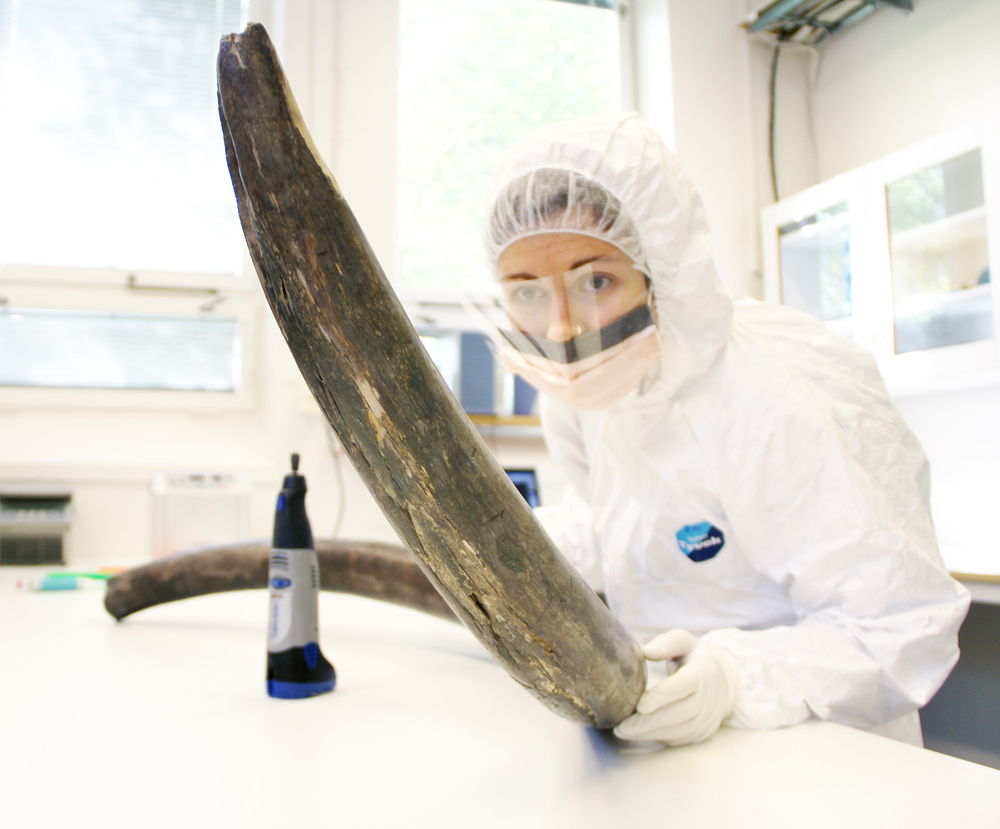New Woolly Mammoth Lineage Discovered

A previously unknown European lineage of woolly mammoths once plodded Earth, suggest new DNA analyses, which also provide new evidence for the role of climate change in the animal's ultimate extinction.
The woolly mammoth — an ancient relative of the Asian elephant — roamed northeastern regions of Siberia as far back as 700,000 years ago. Fossil remains suggest the animal's habitat range extended through much of northern Eurasia and North America during a globally cool period called the Late Pleistocene, from about 12,000 to 116,000 years ago. The animals went extinct shortly after the Late Pleistocene ended.
Until now, genetic studies of woolly mammoth population dynamics have been based primarily on small fragments of tissue, including woolly mammoth hair, preserved in Siberian and North American permafrost. These past studies have indicated that two distinct populations roamed these regions during certain periods in the past. Little is known about European populations, however, due to the lack of permafrost and the resulting degradation of genetic information from that region. [Image Gallery: Stunning Mammoth Unearthed]
Now, a team of researchers based at the Swedish Museum of Natural History in Stockholm has analyzed a suite of 88 new DNA samples from woolly mammoth museum specimens ranging from Europe to North America. The team has compiled these with more than 200 existing genetic datasets to create the most comprehensive computer model yet of changes in the animal's population dynamics through time. The results were detailed online Sept. 10 in the journal Proceedings of the Royal Society B.
Amongst their findings, the team notes a genetically distinct group of mammoths that roamed Europe until about 34,000 years ago.
"It was quite surprising that all mammoths older than 34,000 years were actually a distinct population," said study co-author Eleftheria Palkopoulou from the Swedish Museum of Natural History.
After 34,000 years ago, a distinct Siberian population appears to have replaced the European population.
Sign up for the Live Science daily newsletter now
Get the world’s most fascinating discoveries delivered straight to your inbox.
The computer model also indicated the population declined and became more geographically fragmented beginning about 120,000 years ago, during a climatically warm period. The researchers believe this resulted from the fragmentation of the cold-adapted mammoth's northern habitats— including tundra and dry, cold grassland regions without trees called steppes—as temperate forests moved northward.
The ultimate extinction of the mammoths about 11,000 years ago also occurred during a globally warm period, at the end of the last ice age. Researchers have long discussed the possibility that habitat fragmentation drove the animals to extinction at this time, but little data has been available to support the theory. Now, with new genetic evidence that populations became fragmented during past warm periods, researchers may be able to assess more confidently the role of climate in the animal's extinction, the team says.
Ross MacPhee, a mammalogy researcher at the American Museum of Natural History who was not involved in the research, says the study is a step forward in understanding mammoth population dynamics, but that more work is still needed to better explain the animal's ultimate extinction. Other theories, including overhunting by humans, have also been suggested and are still currently being addressed amongst mammoth researchers, MacPhee said.
The research team next plans to assess more closely genetic data from specimens collected from the last places the mammoths lived before their extinction, in hopes of finding more genetic explanations for the ultimate fate of the animals.
Follow Laura Poppick on Twitter. Follow LiveScience on Twitter, Facebook and Google+. Original article on LiveScience.










